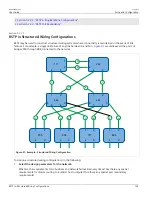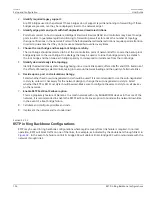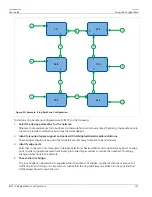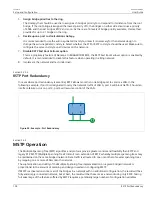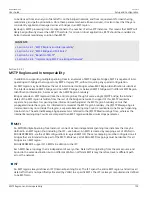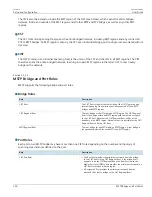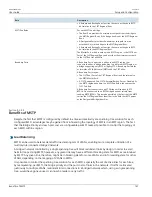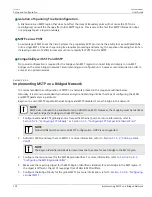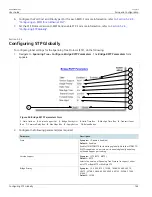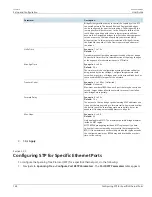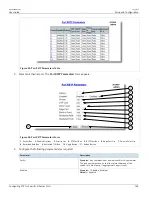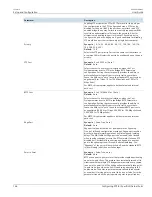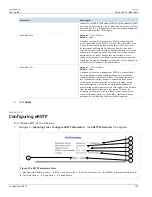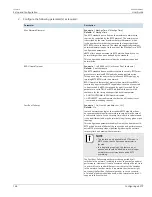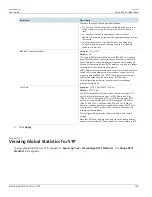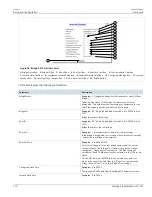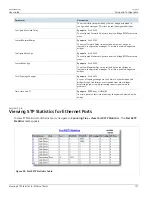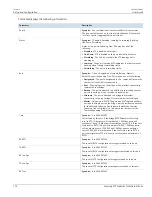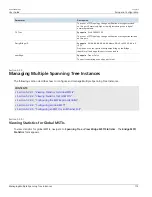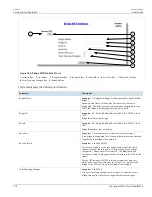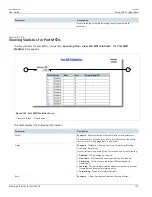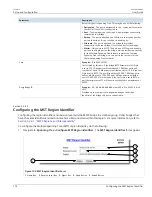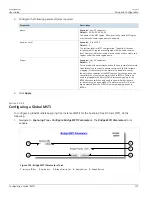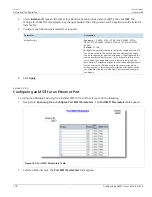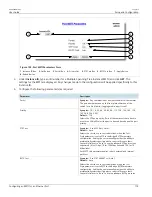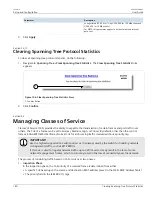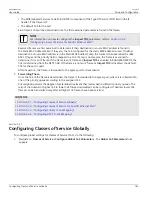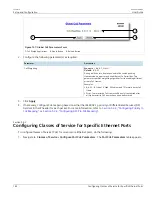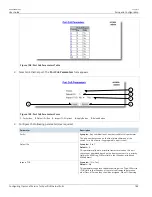
Chapter 5
Setup and Configuration
RUGGEDCOM ROS
User Guide
168
Configuring eRSTP
2. Configure the following parameter(s) as required:
Parameter
Description
Max Network Diameter
Synopsis:
{ MaxAgeTime, 4*MaxAgeTime }
Default:
4*MaxAgeTime
The RSTP standard puts a limit on the maximum network size
that can be controlled by the RSTP protocol. The network size
is described by the term 'maximum network diameter', which
is the number of switches that comprise the longest path that
RSTP BPDUs have to traverse. The standard supported maximum
network diameter is equal to the value of the 'MaxAgeTime' RSTP
configuration parameter.
eRSTP offers an enhancement to RSTP which allows it to cover
networks larger than ones defined by the standard.
This configuration parameter selects the maximum supported
network size.
BPDU Guard Timeout
Synopsis:
1 to 86400 s or { Until reset, Don't shutdown }
Default:
Don't shutdown
The RSTP standard does not address network security. RSTP must
process every received BPDU and take an appropriate action.
This opens a way for an attacker to influence RSTP topology by
injecting RSTP BPDUs into the network.
BPDU Guard is a feature that protects the network from BPDUs
received by a port where RSTP capable devices are not expected
to be attached. If a BPDU is received by a port for which 'Edge'
parameter is set to 'TRUE' or RSTP is disabled, the port will be
shutdown for the time period specified by this parameter.
• DON'T SHUTDOWN - BPDU Guard is disabled
• UNTIL RESET - port will remain shutdown until the port reset
command is issued by the user
Fast Root Failover
Synopsis:
{ On, On with standard root, Off }
Default:
On
In mesh network topologies, the standard RSTP algorithm does
not guarantee deterministic network recovery time in the case of
a root switch failure. Such a recovery time is hard to calculate and
it can be different (and may be relatively long) for any given mesh
topology.
This configuration parameter enables Siemens's enhancement to
RSTP which detects a failure of the root switch and performs some
extra RSTP processing steps, significantly reducing the network
recovery time and making it deterministic.
NOTE
• This feature is only available in RSTP mode. In
MSTP mode, the configuration parameter is
ignored.
• In a single ring topology, this feature is not
needed and should be disabled to avoid longer
network recovery times due to extra RSTP
processing.
The Fast Root Failover algorithm must be supported by all
switches in the network, including the root, to guarantee optimal
performance. However, it is not uncommon to assign the root role
to a switch from a vendor different from the rest of the switches
in the network. In other words, it is possible that the root might
not suport the Fast Root Failover algorithm. In such a scenario,
a "relaxed" algorithm should be used, which tolerates the lack of
support in the root switch.


